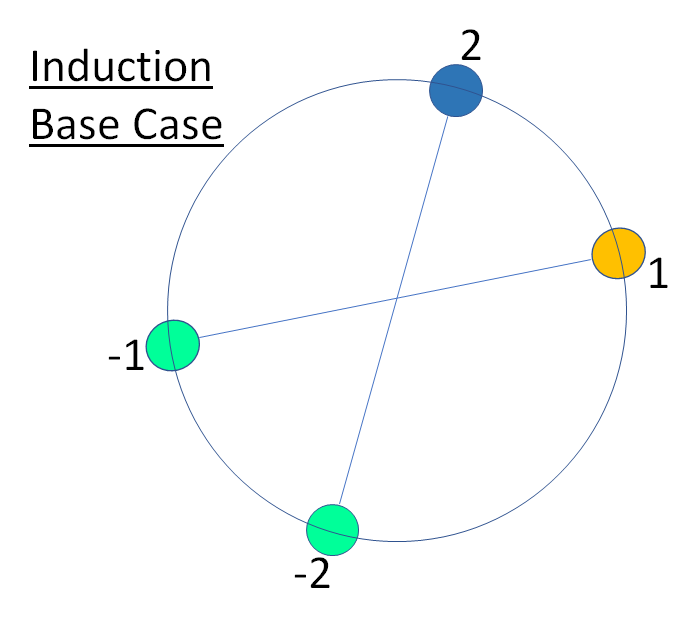Sperner’s Lemma is often called the "combinatorial analog" of Brouwer’s Fixed Point Theorem, and similarly Tucker’s Lemma is often called the combinatorial analog of Borsuk–Ulam’s Theorem.
We can fairly directly show Borsuk–Ulam implies Brouwer, but it seems no direct combinatorial proof is known between Tucker's and Sperner's Lemma. (see a related discussion from 2013/2014 with links to good articles at Sperner's lemma and Tucker's lemma.)
To my surprise, I find that Sperner's Lemma directly implies Tucker's Lemma in two dimensions. My question: are there any recent results about such a direct combinatorial link for arbitrary dimension?
Edit: As a side comment, there is a striking consequence from Sperner $\Rightarrow$ Tucker: It is well-known that Tucker $\Rightarrow$ Borsuk-Ulam $\Rightarrow$ Brouwer $\Rightarrow$ Sperner. So Sperner $\Rightarrow$ Tucker could establish a meaningful scope of equivalence for all these results.
For clarification, I am adding a 2-dimensional example, and a proof why Tucker’s Lemma follows directly from Sperner’s Lemma. (This example only shows the boundary labelling, not the triangulation and the inside vertices).
Take a triangulated polygon with vertices labelled -2, -1, 1, or 2, and antipodally symmetric labelling on its boundary, satisfying the conditions of Tucker’s Lemma.
Color the boundary labels such that they meet the conditions of Sperner’s Lemma, like in the example, i.e. $1\mapsto \text{orange}$; $2\mapsto \text{blue}$; $-1, -2\mapsto \text{green}$. Assign the colors to all the Tucker-labelled vertices inside the polygon in the same way
Edit: In the two-dimensional case, such a valid Sperner labelling always exists. Please see the proof in the answer below.
Here is why this Sperner color labelling directly implies Tucker's Lemma:
Because of the valid Sperner coloring of the boundary, a 3-colored Sperner triangle must exist. But this 3-colored triangle either has a complementary green–orange edge $(-1,1)$ or a complementary green–blue edge $(-2,2)$. In other words, the existence of the complementary edge follows directly from Sperner’s Lemma, proving Tucker’s Lemma.
In the two-dimensional case, the Sperner color labelling is always compatible with the Tucker labelling, hence my question about any recent results or ideas in this direction for arbitrary dimensions.
(for a related question see this post Structure of boundary labelling in Sperner‘s Lemma)






